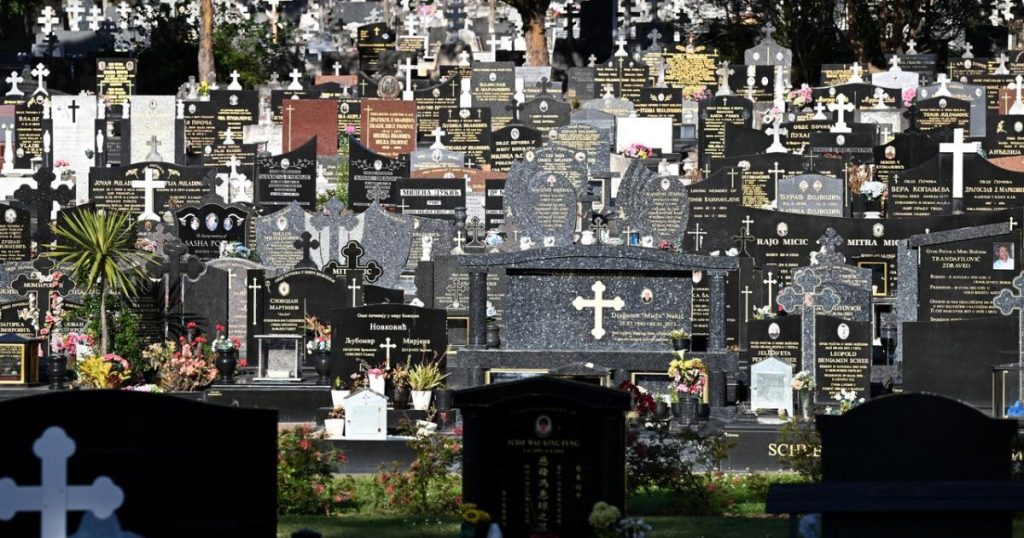Listen to the article
Immigration Not Concealing COVID-19 Vaccine Deaths, Data Analysis Shows
A viral social media claim suggesting that mass immigration is being used to hide the deaths of two million Australians linked to COVID-19 vaccines has been thoroughly debunked by fact-checkers and population experts.
The Facebook post in question alleged that Australia’s current population figures indicate approximately two million people have died from COVID-19 vaccines, claiming this represented “1 in 14 GONE” and that “high immigration” was being used to conceal these supposed deaths.
The post attempted to support its argument by comparing Australia’s projected 2025 population of 28.1 million with the 2020 figure of 25.6 million, arriving at a population increase of 2.5 million people. The user then claimed that with immigration exceeding 3 million people plus births over that five-year period, Australia should have experienced a much larger population increase, concluding that two million people must have died from vaccines.
However, detailed analysis of official Australian Bureau of Statistics (ABS) data reveals fundamental flaws in this reasoning. According to Elin Charles-Edwards, director of the Queensland Centre for Population Research, the actual population figures don’t match the post’s claims. ABS data shows Australia’s population was 25,649,985 in March 2020 and is projected to reach 27,536,874 by March 2025—an increase of 1.88 million, not 2.5 million as claimed.
This population growth consists of two components: natural increase (births minus deaths) and net overseas migration (arrivals minus departures). Between March 2020 and March 2025, Australia recorded 1,491,500 births and 903,000 deaths from all causes, resulting in a natural increase of 588,500 people.
The social media post also significantly misrepresented immigration figures. While approximately 5.46 million people arrived in Australia during this period, about 4.12 million departed, resulting in net overseas migration of 1.34 million—far less than the “3 million plus” claimed. When combined with natural increase, these figures account for population growth of approximately 1.93 million, closely matching the projected 1.88 million increase in Australia’s population.
“In short, there is no missing two million,” Charles-Edwards confirmed.
The viral claim also references an alleged Japanese study claiming COVID vaccines caused “the death of one billion people” globally. Fact-checkers found no evidence of any such credible study. United Nations data shows annual global deaths from all causes during 2020-2023 ranged between 61.65 million and 69.73 million, with the World Health Organization attributing 14.9 million excess deaths to the pandemic itself.
Regarding vaccine safety in Australia specifically, the Therapeutic Goods Administration (TGA) has confirmed only 14 deaths linked to COVID-19 vaccination in the country—a stark contrast to the two million claimed in the post.
Heather Booth, professor emerita at Australian National University’s School of Demography, also dismissed the claim, pointing to the comprehensive population data that contradicts the post’s assertions.
The fact-checking investigation highlights a critical point about population statistics: deaths and immigration are recorded separately through distinct systems, making it impossible to use migration data to “hide” death figures as suggested in the viral claim.
This is not the first time such claims have circulated. Fact-checkers have repeatedly debunked similar misinformation about COVID-19 vaccines and mortality rates, underscoring the importance of referring to official data sources when evaluating population trends and public health outcomes.
The analysis demonstrates how misinterpretation of demographic data can lead to unfounded conspiracy theories that contradict established statistical evidence and scientific consensus on vaccine safety.
Fact Checker
Verify the accuracy of this article using The Disinformation Commission analysis and real-time sources.




12 Comments
The detailed breakdown of the population data and the experts’ perspectives lend strong credibility to this fact check. It’s a good example of how to properly investigate and debunk misleading claims.
Absolutely. Grounding the analysis in official statistics and consulting relevant subject matter experts is the right approach to counter misinformation, rather than just dismissing it outright.
While I’m glad to see this specific claim about concealing vaccine deaths being debunked, the broader issue of transparency around vaccine safety data remains important. Fact-checking efforts like this help maintain public trust.
You make a fair point. Ongoing vigilance and open dialogue around vaccine data and safety is crucial, even as specific conspiracy theories are disproven. Maintaining transparency is key to upholding public confidence.
This fact check provides a solid rebuttal to the misleading social media post, using authoritative data sources and expert analysis. It’s a good example of responsible journalism in the face of misinformation.
Agreed. Fact-checking efforts that rigorously examine the evidence and consult relevant experts are essential for countering the spread of false narratives, especially on sensitive public health topics.
This seems to be a well-researched fact check debunking the claim that vaccine deaths are being concealed by migration. Relying on official population data and expert analysis is the right approach to assess such sensational allegations.
Appreciate the thorough investigation into the flaws in the original social media post’s logic. Solid data and expert perspectives are key to countering misinformation around sensitive topics like vaccine safety.
While any vaccine-related deaths are concerning, this article suggests the specific claim about 2 million deaths in Australia is simply not supported by the evidence. Fact-checking is crucial to separate truth from fiction.
Agreed. Vaccine safety should be taken seriously, but unfounded conspiracy theories can distract from legitimate concerns and undermine public trust. Rigorous analysis is needed to address misinformation effectively.
Interesting that the analysis focuses on Australia’s population trends. Migration and demographic changes are often used to push baseless conspiracy theories, so it’s good to see the facts laid out clearly.
Indeed, this fact check highlights the importance of relying on official data sources and expert opinions rather than unsubstantiated social media claims, especially when it comes to public health issues.